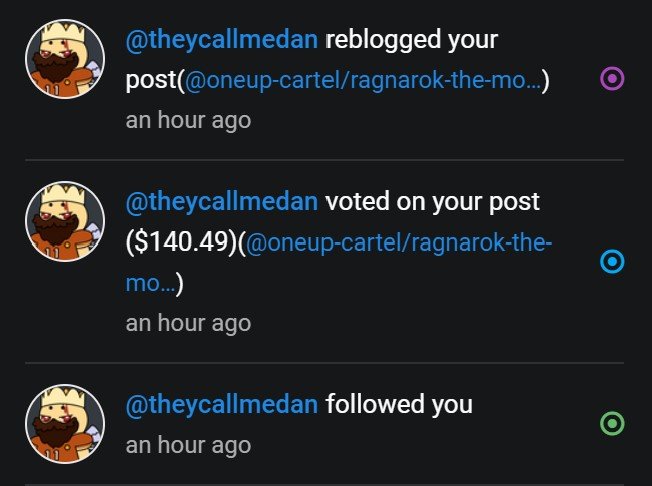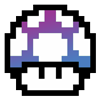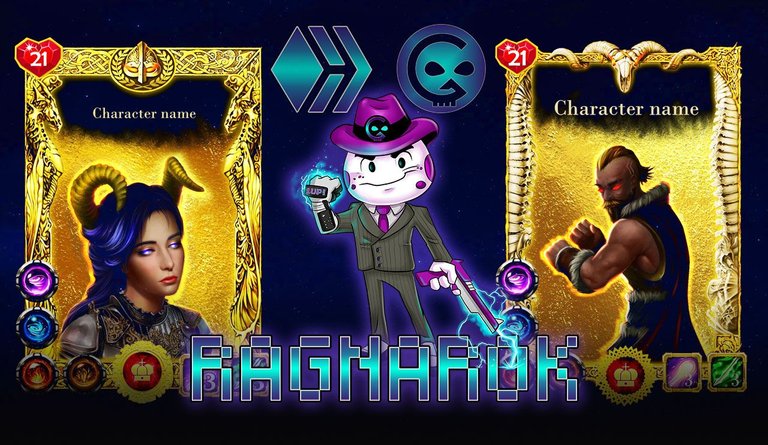
Out of the depths of the HIVE blockchain is crawling a monster of a blockchain game, a hattrick of strategy that will scare noobs and reward greatly only the toughest of the toughies and the smartest of the smarties - and they will make it square! Prepare yourself - if you can - for Ragnarok!

What Am I Looking At?
Ragnarok is an upcoming multi-part battle system based heavily upon Chess, TCG's (Trading Card Games) and Poker. Your chess pieces are represented by Gods, Titans and other legendary figures from various mythologies, and your goal is to eliminate your opponent's King before they manage to do the same to yours. Extreme emphasis has been placed on making Ragnarok a skill-based game that allows superior tactics to overcome the stereotypical "whale" decks.
Rather than having each player's chess pieces slowly knock each other off the board Battle Chess style, every "collision" between pieces initiates a duel wherein players will use spells, pets and hands of poker to determine which God will meet an untimely demise.

Where Have I Seen This Before?
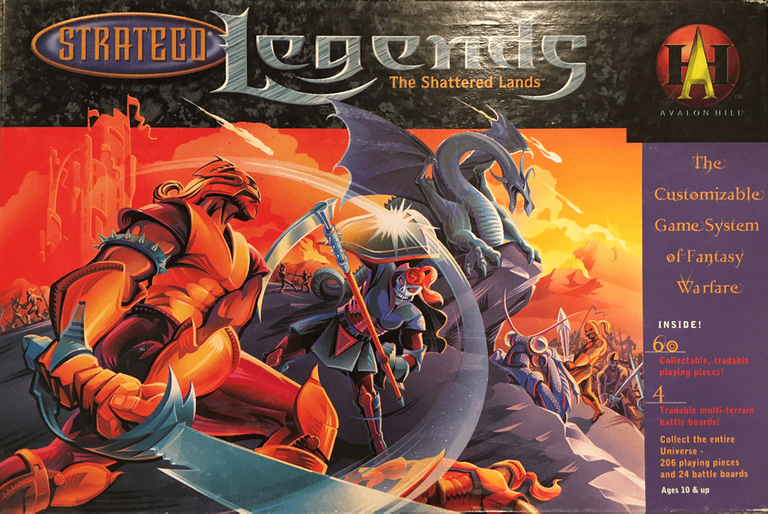
Stratego Legends: The Shattered Lands was an early attempt at a similar concept but in physical form and at a much smaller scale. The game combined the classic game Stratego with a deck builder approach that lets you assemble armies from light and dark factions according to certain rules and constraints. The units comprising each army had unique abilities that altered the base rules in ways that sometimes completely reversed their roles.
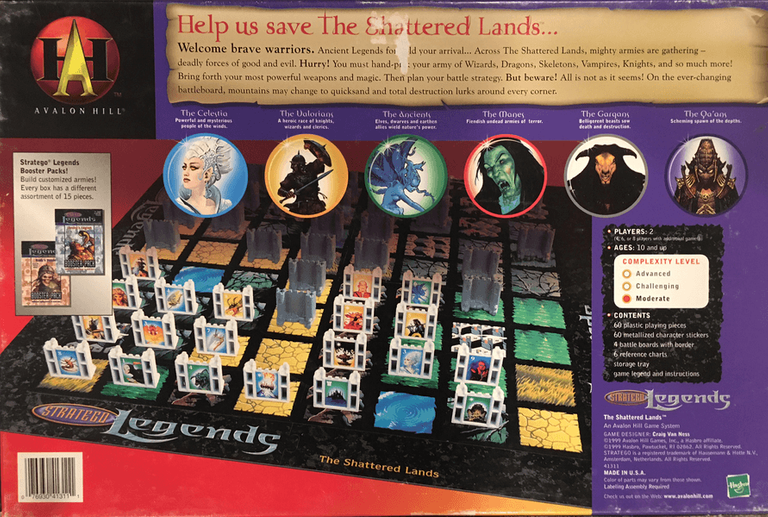
Similar to the mythological pantheons Ragnarok will eventually include, Stratego Legends allowed players to collect the individual pieces and even went so far as to provide randomized board tiles that each player chose half of when preparing the game area. Just like Ragnarok intends to do with elemental-themed chessboard spaces, these land tiles provided additional synergistic interactions that further enhanced or undermined each player's strategy.
This board game ultimately failed to catch on thanks to overly complex mechanics that were hard to keep track of, fiddly game pieces and too many moving parts. Ragnarok is well-positioned to avoid all these weaknesses, now that digital games do all the bookkeeping for the players.

Hive-Only Airdrop
As part of its unique release structure, Ragnarok is airdropping all Season 1 NFT's onto Hive holders as a way of rewarding them for being a part of the community. This is in stark contrast to the presales and whitelisting events that have become commonplace in the blockchain gaming industry.
Typically, crypto games launch in a way that rewards a small group of buyers with significant resources before everyone else can even begin to participate. These early adopters sometimes get extremely powerful assets that are borderline game breaking by buying all items available during the presale/prelaunch. This usually makes the entry price for the game absurdly high, as some only bought in to resell for multiple times the original price later on.
Instead, Ragnarok will assign airdrops based on how much Hive players held during the January 6th snapshot that was taken earlier this year. Any unclaimed NFT's will transfer to a pool used to provide in-game prizes.

Everything Until Now
Since being announced barely a month ago, additional information has come out through the release of a game design document and subsequent AMA held to answer important questions from the Hive community.
Additionally, the following artwork has been revealed to help visualize the NFT cards and the stats each Character will have:
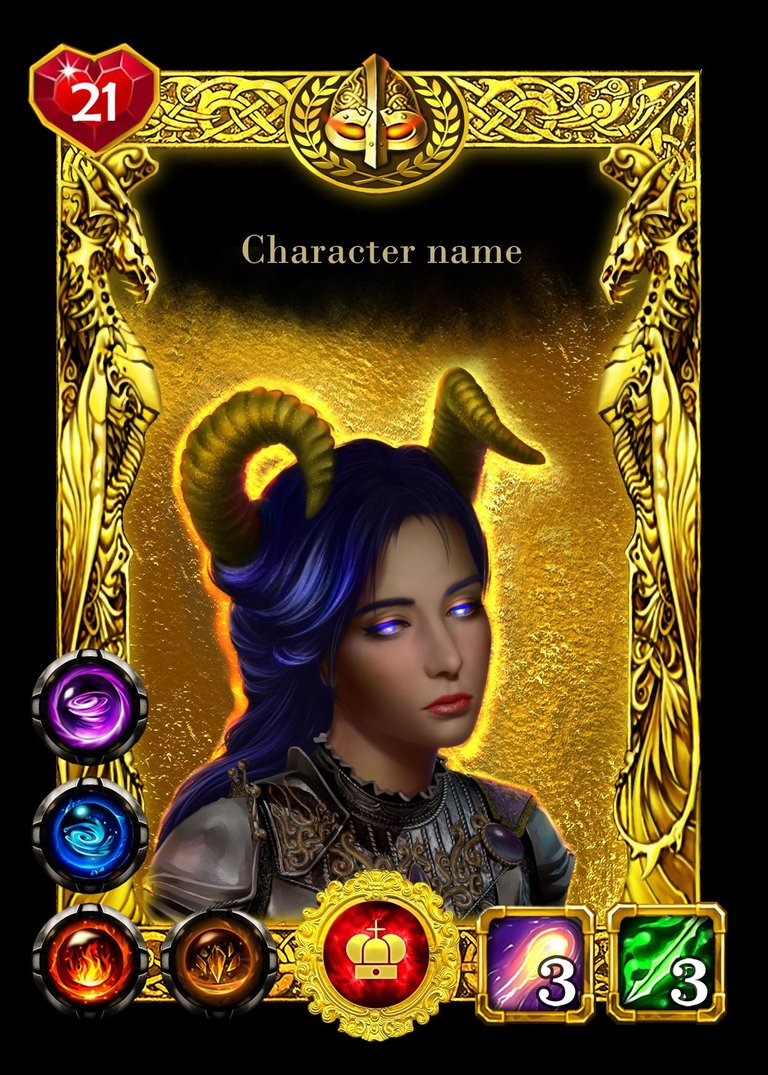 | 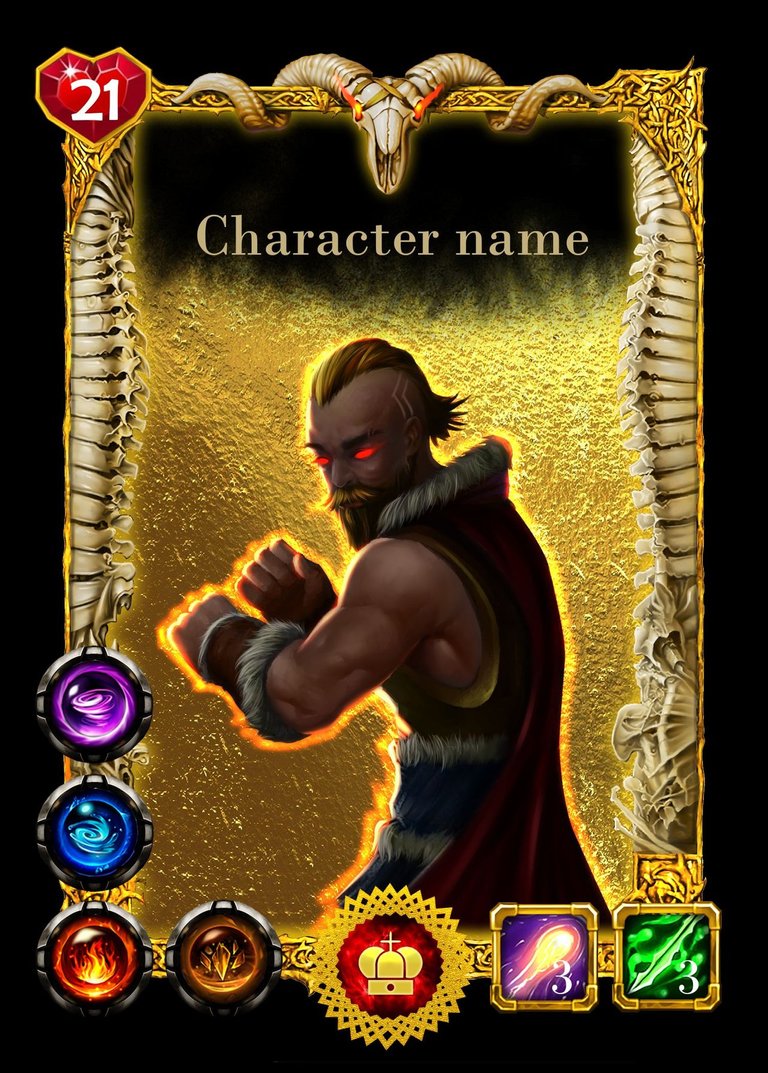 |
|---|---|
| Aesir | Vanir |
From these previews, we know Characters will have:
- Health (top-left)
- Up to 4 Abilities (bottom-left)
- A Chess Class (bottom-center)
- Up to 2 Piece-specific Abilities (bottom-right)
- An Element type (eye color, chess class background color)
- A Quality (background color)
- A Tribe (card border)
Elemental types include Earth, Fire, Water and Wind while Quality (bronze/silver/gold) determines how many EXP Coins players receive for winning. We currently only know of two Norse Tribes, the Aesir and Vanir, but there have been hints of other factions and pantheons that may be introduced down the road. Having a team with at least eight cards of the same faction will grant additional bonuses.

How Does It Work? Seriously?
Because of its complexity, Ragnarok sounds like three games stacked on top of each other while wearing a trench coat. Its rules are understandibly confusing at first, but we'll try to simplify things.

At a basic level, Ragnarok uses alternating rounds of TCG turns and poker hands to determine which piece is removed when two chess pieces occupy the same space. This occurs whenever one player moves their piece into a square already occupied by one of the other player's pieces. With this in mind, having a solid understanding of chess, poker and deckbuilders can give you a big advantage.
The gameplay loop for Ragnarok is actually quite simple when summarized:
- Pick your Pieces
- Assemble each Piece's Spell Deck
- Play Chess
- Two Pieces Collide!
A) Ranged Combat: Play a round of Spells
B) Melee Combat: Play a hand of Poker
C) repeat A & B until one Piece wins - Resume playing Chess until one King falls
Note that "Ranged" and "Melee" are used primarily to describe the feel of each step rather than the literal process. It could very well be that an archer shoots arrows at the opposing Character during the Poker phase. The difficulty lies in understanding what to do during each phase of the game, so let's remedy that!

Pre-Game
Before you've even begun a match, a considerable amount of planning is required to ensure you have the tools necessary to win. First, you'll choose which mythical Characters will form your team of ten chess pieces:
- (1) King
- (1) Queen
- (1) Rook
- (1) Bishop
- (1) Knight
- (5) Pawns

Once chosen, each piece has their own deck of spells that need to be chosen. The number of spells each piece's deck can have is determined by its type:
- (35) Kings
- (33) Queens
- (30) Bishops/Knights/Rooks
- (22) Pawns

PHASE 1 — Chess
Each match begins on a chessboard measured 8x8 tiles and made to be played along its diagonal orientation. Some tiles are colored to represent different elemental influences (Fire, Water, Electricity, Earth) which will have a rock-paper-scissors mechanic that hasn't been fully described, yet.
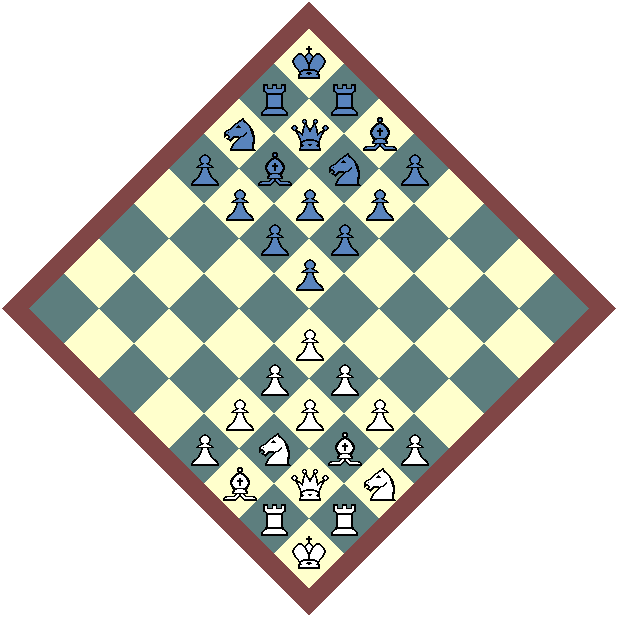
Players take turns moving one piece at a time, carefully positioning themselves, until someone is ready to strike. Pieces won't simply knock each other over when landing on the same tile, rather a 1v1 duel is initiated. The duel will cycle through ranged and melee combat until one Character is defeated and the chess match resumes. The overall objective is to defeat your opponent's King by reducing its life points to zero.
We still don't know if players need a full set of pieces to begin playing, or if they can play with default pieces standing in for missing pieces.
The Classes
| Piece | Specialty |
|---|---|
 | Most survivable, multi-element attacks, and no elemental weaknesses. |
 | Highest DPS and multi-element attacks. |
 | Tanky with defensive abilities. |
 | High DPS glass cannon. |
 | currently unknown |
 | Legendary demi-gods or humans, weaker than other pieces. |

PHASE 2 — Ranged Combat (TCG/Pet Battler)
A duel takes place over two forms of combat. The first involves casting Spells and summoning Pets to attack your opponent. You'll begin each duel with three Spells and the opportunity to mulligan them before combat begins.
Spells
Much like Hearthstone or the recently covered Gods Unchained and Skyweaver, each round of "Ranged" combat involves spending mana to cast Spells. If neither Character is defeated during the "Melee" combat that follows, each player's mana is refreshed and increased by one before a new round begins.
Pets
Some Spells summon Pets that grant buffs, help in attacking and have to be defeated before your Character can be attacked directly. Casting Spells is optional, and players can choose to cast them before or after their Pet attacks.
Keep in mind that any Spells used are spent for the entire game, as each Character's life points and deck won't recharge after winning a duel. You must be careful when using the same piece in multiple fights.

PHASE 3 — Melee Combat (Poker Boxing)
The most complicated combat system of Ragnarok takes place during "Melee" combat when the two Characters square up to fight directly. Using the rules of Texas hold'em, each player will engage in a slightly altered form of "betting" based on "Faith" by using a hand of cards to help them strike heavy blows against their opponent.
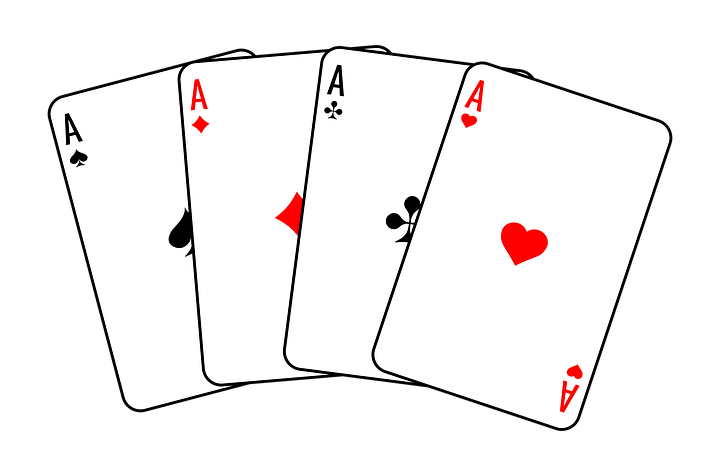
Simply speaking, your Character's current Health serves as your "poker chips" for betting. If you win the hand, your opponent will take damage equal to your bet.
Each hand of poker begins with one player making an Attack (Bet) against the opposing Character. The attacked player can then Engage (Call) or Counter Attack (Raise) if they wish to participate in the round. If they don't feel their hand is up to snuff, they can Brace (Fold) for the Attack to gain 5% Stamina (explained below) and take 2 damage. If you have an active Pet leftover from "Ranged" combat, your slowest Pet takes 1 damage in place of your Character.
If the betting continues, the active player can Defend (Check) to gain 5% Stamina or Counter Attack (Raise) just like a normal hand of poker. The process of playing through Faith (Flop), Foresight (Turn), and Destiny (River) allows for continuous interplay between players until an end point to the betting is reach and the Resulting Faith (hand reveal) is resolved.
Here are the new terms for quick reference:
- Chips (Health)
- Hand (Faith Cards)
- Bet (Attack)
- Call (Engage)
- Raise (Counter Attack)
- Fold (Brace)
- Check (Defend)
- Flop (Faith)
- Turn (Foresight)
- River (Destiny)
- Resulting Faith (one hand of betting)

In addition to the standard Texas Hold'em rules, there are several additional mechanics that can influence the damage dealt by a winning hand.
Stamina
Each Character begins with 10 Stamina points that increase by 1 whenever another chess piece moves. These points are consumed at a rate of 1 per 10% of your maximum Health you successfully dealt as damage to the opponent. Bracing and Defending each recover 5% Stamina.
Speed
Speed is a mechanic for extra attacks that accrues points at a rate inverse to Stamina. In other words, for every point of Stamina you would lose to a successful attack, you'd gain 1 Speed. Speed can only be used in the Duel it was acquired in, and it can be spent to add 10% damage per 1 point. This amount cannot exceed the base damage of the attack, meaning an attack of 50% can only be doubled to 100% by spending 5 Speed.
Rage
Depending on the amount of Health you bet on an Attack, you'll gain a proportional amount of Rage. Upon obtaining 50, you can spend it to perform a "finishing move", but the actual mechanics of such haven't been provided by the developers, yet.
Rage generation is determined by your Health bet which is broken down in thirds:
- 0-33% (Light)
- 34-66% (Medium)
- 67-100% (Heavy)
Aim
When choosing to Attack (Bet), you must choose a part of your opponent's body to target. Successful hits gain additional effects based on the target:
- High/Head (+5% bonus Damage)
- Middle/Torso (-5% Stamina recovery debuff)
- Low/Legs (-5% Speed debuff)
- Left Arm (-5% Damage debuff)
- Right Arm (-5% Damage debuff)
Defense
Similar to Aim, players each chose a target to defend if they participate in the hand. If they chose the same target as their opponent, all damage from a successful Attack is negated and a counter attack may be triggered.
The base chance for a counter attack is 10%, and there are passive abilities that increase this percentage. Some passives may also cause debuffs on attackers when defending successfully.

Post-Game
After a match, you'll have the opportunity to "stake" any EXP coins you have into your NFT's to level them up. Characters, Spells and Pets start at level 1 with a maximum level of 9. Leveling up increaseas a card's attributes and effectiveness in future matches.

Looking Forward
While an official roadmap hasn't been released, the game will have an annual season with a year-long leaderboard that features a different pantheon each year. Norse mythology is up first, and the developers have hinted that Greek mythology might be next in Season 2. The leaderboard will reset at the end of each year, and top ranking players can probably expect big rewards given that an entire year of dedicated playing is nothing to scoff at!
Development also aims to provide hundreds of Gods with unique passive abilities, hundreds of Spells (and Pets), and the earning of weapons, equipment, items, and Spells as drops from winning matches.
Additional thought has been put into creating Hive "sinks" to burn off inflatation through various activities while collecting the revenue from HBD purchases into a SIP v1 that pays the interest out to players. This will be supported by requiring players to spend HBD to play, heal your Characters between matches, and purchase items.

For the latest news on Ragnarok, swing by their HIVE profile @ragnarok.game or watch for our latest updates!
This article was written by @trashyomen and @entrepidus as comission work for ONEUP, edited by @spiritsurge, and proofread by @flauwy.

What's The Gameplan For the Cartel?
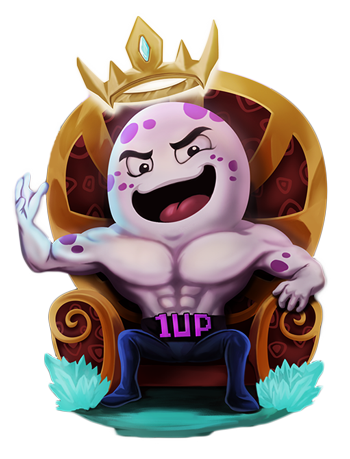
Please note that the current game design document doesn't explain every feature in detail, and some questions weren't answered during the AMA. There may be gaps or misunderstandings in our information, so please let us know in the comments if there's something we've missed.
We will take this game very serious as this seems to be the most hardcore strategy game on the entire blockchain - Cartel Elite material.
In the meantime: Game On!
